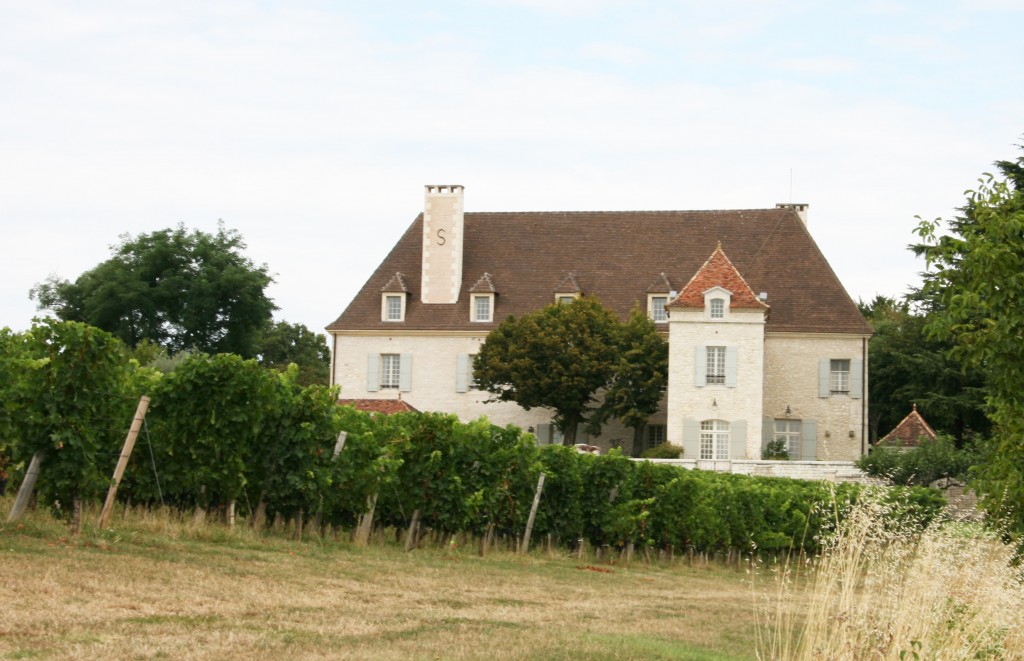The harvesters at Louis Roederer’s base in Ay were celebrating the completion of their work and the prospect of not having to take a shower in the icy downpours that hit the region today. The pickers based at Verzenay were somewhat less fortunate: their job was not quite done.
Roederer’s technical team, headed by Cellar Master and Assistant Director of Champagne Louis Roederer, Jean-Baptiste Lécaillon were in good heart, having come through as challenging a growing season as anyone could remember, and kindly answered my questions with a great deal of patient good humour.
Jean-Baptiste, who has an extraordinary ability to reel off sugar-level statistics for vintages back to 1947, is very happy indeed with the 2012 harvest. He believes that it may turn out to be better even than 1996 and 2002. Sugar levels this year averaged 11.7, but some Pinot Noir at Cumières reached 12.8. Acidity is very fresh. Above all the grapes taste wonderful – the surest measure of quality. Yields are modest, averaging around 7,500kg/ha for conventionally farmed vineyards and 6,500kg/ha for those in an organic or biodynamic regime – not that Roederer are looking for volume: Jean-Baptiste prefers the greater concentration of fruit flavour that only comes from lower yields. There were 15 treatments this year on biodynamic and organic plots at the Domaine de Champagne, with a total of 4kg/ha of Copper used (still comfortably below the biodynamic limit of 5kg). Last year there were 7 treatments and a total of 1.6kg of Copper. Unlike some less experienced organic growers, Roederer’s vines yielded an acceptably-sized crop.
Roederer are unusual amongst the great houses of Champagne in having a considerable commitment to organic and biodynamic viticulture, around 22% of their holdings: 40 ha in biodynamic and 15 in organic.
The purpose of organic and biodynamic viticulture at Roederer is to improve fruit quality, but also to enable those who work the land to re-establish a closer link with it and thus a better understanding of it. ‘Know-how’ is one of Jean-Baptiste’s watchwords. By the same measure, the 15 ha hectares of vineyards that are worked by horse are not primarily to lessen soil compaction but ‘to rediscover how to do it and in the process learn much more about their site – where the soil is hard and where it’s soft, and so on. Even the horse will get to know it too!’ Jean-Baptiste wishes that all his tractor drivers could take at least a short course in ploughing by horse.
More detailed research on the effects of organic and biodynamic viticulture is planned and negotiations are taking place with possible university partners.
Jean-Baptiste and his team are clearly not rigid followers of Steineresque philosophy but believe that the upshot of research will be a new middle way between organic and biodynamic regimes in which the best of both are combined, using as much supporting empirical evidence as possible. So far the opinion of the team is that the organic and biodynamic plots produce better fruit, with both higher sugar and acidity. Jean-Baptiste suggests that a more open canopy brings better-aeration and that the vines absorb less Potassium. The biggest differences are between conventional viticulture and organic and biodynamic together. Biodynamics adds little empirical value to the benefits of organic viticulture, but it is an important tool in achieving a new kind of precision viticulture (conventional research in precision viticulture is also part of the programme).
Other important research has been on massal selection from plots of the best old Pinot Noir vines to develop strains that ripen later and are more resistant to leaf-roll and fan-leaf viruses. Massal selection techniques are also being used to develop new, less vigorous clones of rootstock 41B. Jean-Baptiste points out that most planting material comes from stock raised in warmer climates, especially Spain, but at Roederer they have the chance to breed from stock that is adapted to the calcareous soil and cool conditions of Champagne. Important work is also being carried out on local yeast strains. Another project is investigating canopy management. Experiments with Lyre training have not yielded encouraging results and so far, Jean-Baptiste feels that although high and wide does offer higher acid/lower pH for the same sugar levels as traditional cultivation, it also produces fruit with a greater tendency to reduction. For the foreseeable future Jean-Baptiste believes that traditional training methods will continue to meet Champagne’s needs best.
I learned a great deal in a short time, but was struck by how flexible the thinking Jean-Baptiste’s approach is, having first establish a commitment to continue to produce Champagne that is ‘al dente’, with fruit, freshness and even the expression of terror, otherwise a precious concept at Roederer, all in balance. Winemaking is typically reductive, but Jean-Baptiste is unafraid to allow pre-fermentation, hyper-oxidation of second pressing (taille) juice if is will ultimately render it more stable and whilst he goes to pains to work with fruit that is naturally unlikely to undergo a malo-lactic fermentation, it is no disaster if it happens. It is an approach that, to me, makes a great deal of sense.
These four days of visits were made possible by the very generous Champagne Trinity Bursary of the Institute of Masters of Wine. I look forward to my second visit in a few months’ time and would like, in particular, to thank Sylviane Lemaire of Pol Roger and her colleague in the UK Elizabeth Vaughan for making all the arrangements for my stay in Epernay; Mathieu Kauffmann and Christian Dennis at Bollinger, Hubert de Billy and Matthieu Blanc at Pol Roger; Violaine de Caffarelli, Laurent Panigai and Philippe Wilbrotte at the CIVC and Martine Lorson, Jean-Baptiste Lécaillon and his team at Champagne Louis Roederer.

